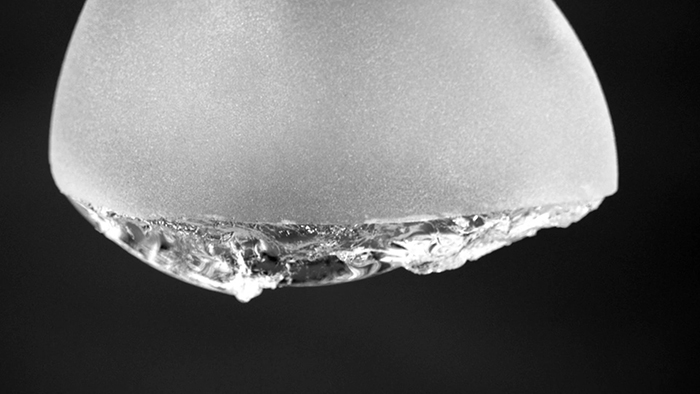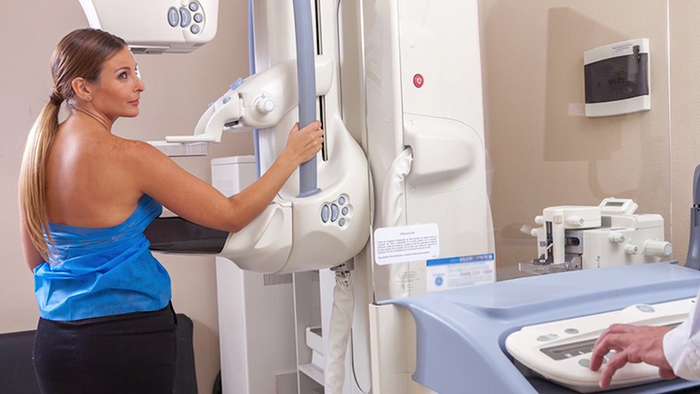According to ASAPS, breast augmentation was the second most popular cosmetic surgery procedure in 2015. Dr. Pat McGuire of St. Louis has an important ‘411’ for her prospective breast augmentation patients: nothing lasts forever. “Prior to consenting to surgery, it’s crucial patients understand that implants are man-made devices and they have a lifespan,” she explains.
Whether a patient chooses saline, silicone or cohesive gel, they will have to eventually be replaced. Some women experience implant failure a couple years after surgery. Others have their original implants for 25 years or more. Most professionals agree the average implant lasts 10 years. And although manufacturers offer warranties on implants, it’s difficult to predict how and when a device might fail. So, how do you know if you have a problem? And what are your options if it happens to you?
by Isabel Bolt
and Patricia McGuire, MD
Rupture – What does it look like?
Saline implants have a valve through which the implant is filled. If it becomes compromised, it can leak. Silicone implants are prefilled, and while it cannot leak, the shell can break or wear down under certain circumstances. With a saline implant it is easier for a patient to tell there is a problem. The breast may exhibit an “edge” or intense rippling, or simply deflate altogether. A ruptured silicone implant is more difficult to detect and may only be discovered through a mammogram, ultrasound or MRI.
In either case, McGuire’s advice is not to panic. “You hear ‘implant failure’ and it sounds catastrophic like they explode in your body, but it is much less dramatic than that,” she explains “It is not an emergency, but we do want to see you once you notice a problem, or a routine scan shows something is irregular.” McGuire likes to see her saline patients within 30 days of a rupture so that the original “pocket” doesn’t shrink down. Silicone retains its shape despite a rupture. “The newer silicone gel implants are much better and any rupture tends to stay close to the implant, so there is no concern that is will spread through your body.”
Replacement Options
According to McGuire, replacement surgery is not as big a deal as the initial surgery. However, in the case of the “average” implant…10 years have gone by. It’s a good time to discuss options. Some patients want to be smaller. Some want to go bigger. Maybe a women wants to exchange saline for silicone. Those who had their implants above the muscle might want to change the location to below the muscle. “With time, bodies change,” says McGuire. “You may have more breast tissue due to menopause. Or you may have had a couple pregnancies and need a breast lift to reposition the breasts. Women should make a decision based on their particular circumstances and desires at the time.”
Removal without Replacement
One option is to remove the implant without replacing it and return to “au naturel.” What will you look like? With saline it is easier to simulate. Dr. McGuire has helped patients decide by actually deflating the opposite implant. “After living with their natural breasts for about 2 months, patients can usually determine if they like the look, or if there are asymmetries.” In some cases, after both saline implants are removed, the breast contour can be refined through fat grafting to the breast.
Appointment Reminder
McGuire likes to see her implant patients every 2 years as a no-charge follow up so she can evaluate their breasts. Aside from rupture, there are other complications caused by implants. Capsular contracture is a condition where scar tissue forms in response to the implant causing hardening of the breasts. In rare instances an implant can shift within the pocket and must be repositioned. Rippling can occur and become more noticeable in implants placed above the muscle, particularly in slender women. Older implants are more susceptible to breaking down, so women who have had implants 10+ years should certainly return to their plastic surgeon for a checkup.
If you are considering breast augmentation, ask about the lifespan of the different types of implants, as well as the risks each one presents and how that might affect their longevity.


















Facebook
Twitter
Instagram
YouTube
RSS